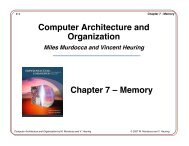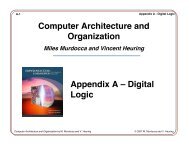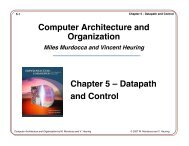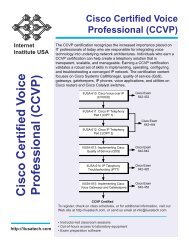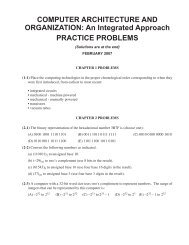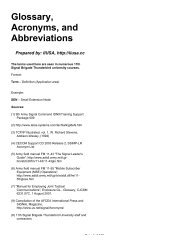Chapter 4: The Instruction Set Architecture - 10/31/2013 02:13:31 ...
Chapter 4: The Instruction Set Architecture - 10/31/2013 02:13:31 ...
Chapter 4: The Instruction Set Architecture - 10/31/2013 02:13:31 ...
Create successful ePaper yourself
Turn your PDF publications into a flip-book with our unique Google optimized e-Paper software.
4-3<br />
<strong>Chapter</strong> 4: <strong>The</strong> <strong>Instruction</strong> <strong>Set</strong> <strong>Architecture</strong><br />
<strong>The</strong> <strong>Instruction</strong> <strong>Set</strong> <strong>Architecture</strong><br />
• <strong>The</strong> <strong>Instruction</strong> <strong>Set</strong> <strong>Architecture</strong> (ISA) view of a machine corresponds<br />
to the machine and assembly language levels.<br />
• A compiler translates a high level language, which is architecture<br />
independent, into assembly language, which is architecture dependent.<br />
• An assembler translates assembly language programs into executable<br />
binary codes.<br />
• For fully compiled languages like C and Fortran, the binary codes<br />
are executed directly by the target machine. Java stops the translation<br />
at the byte code level. <strong>The</strong> Java virtual machine, which is at<br />
the assembly language level, interprets the byte codes (hardware<br />
implementations of the JVM also exist, in which Java byte codes<br />
are executed directly.)<br />
Principles of Computer <strong>Architecture</strong> by M. Murdocca and V. Heuring<br />
© 1999 M. Murdocca and V. Heuring



